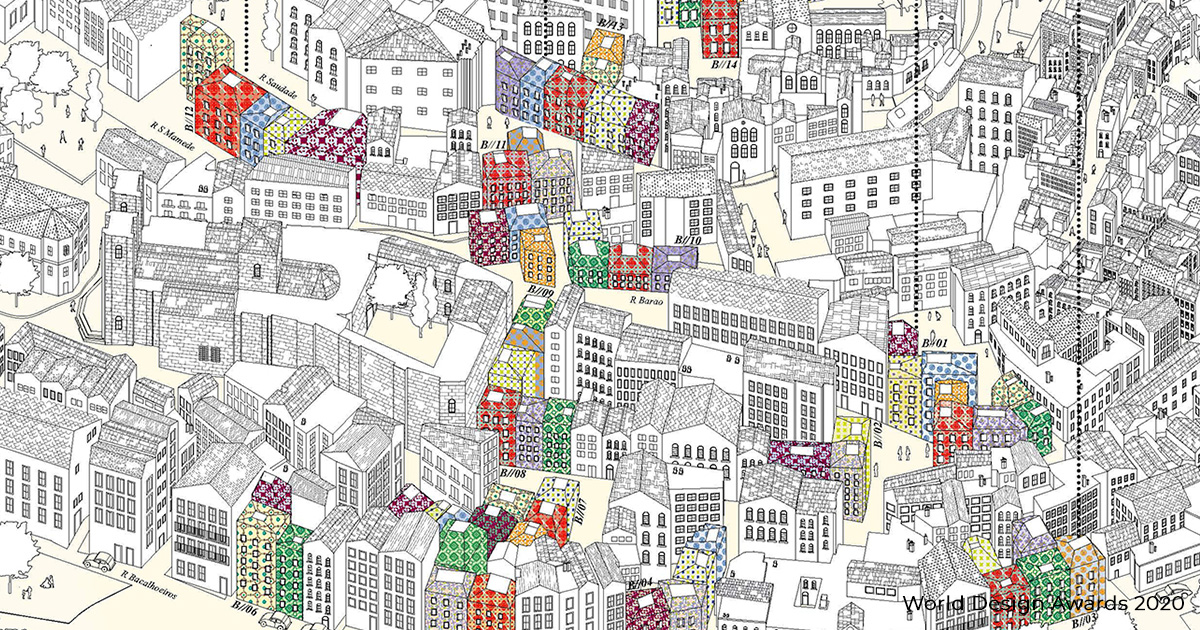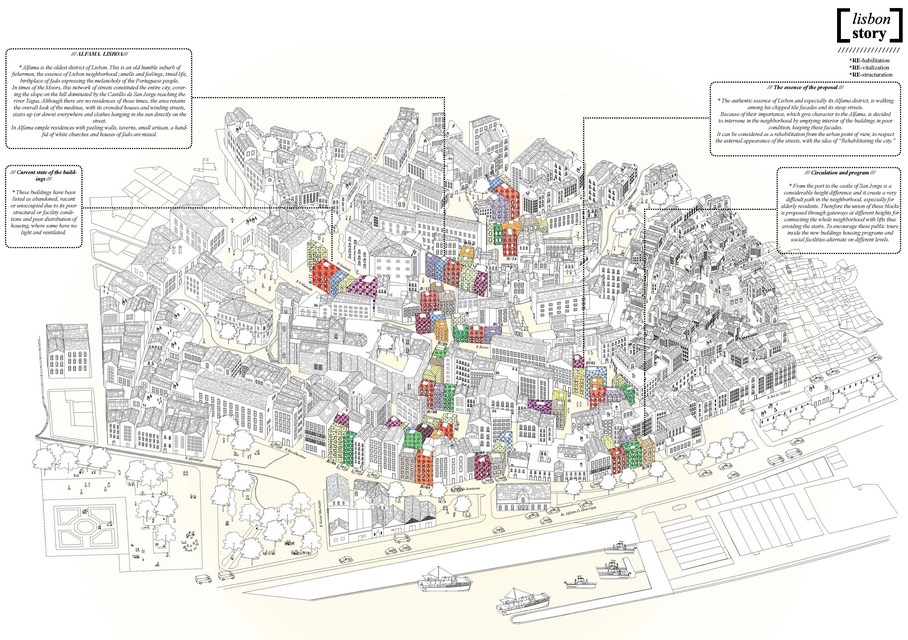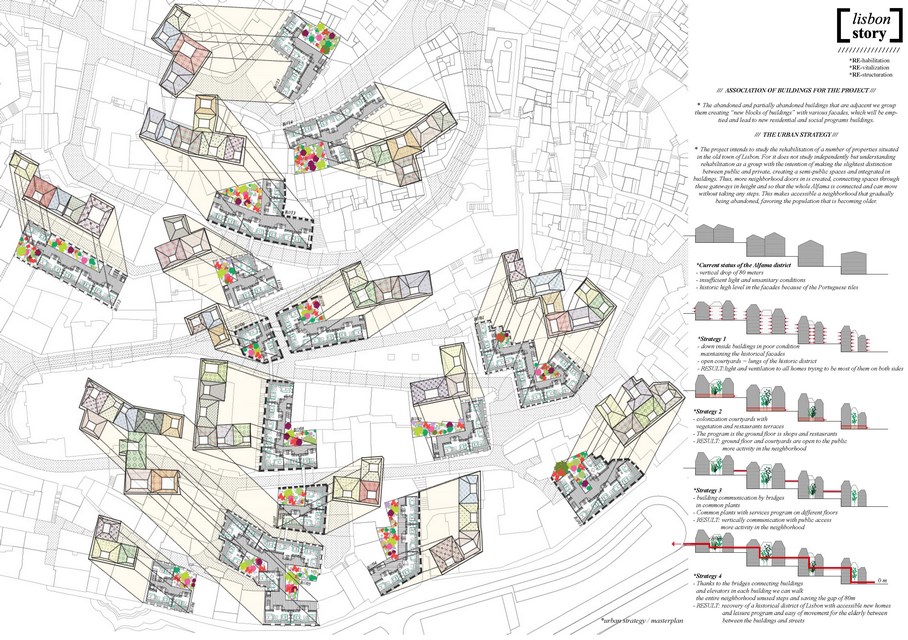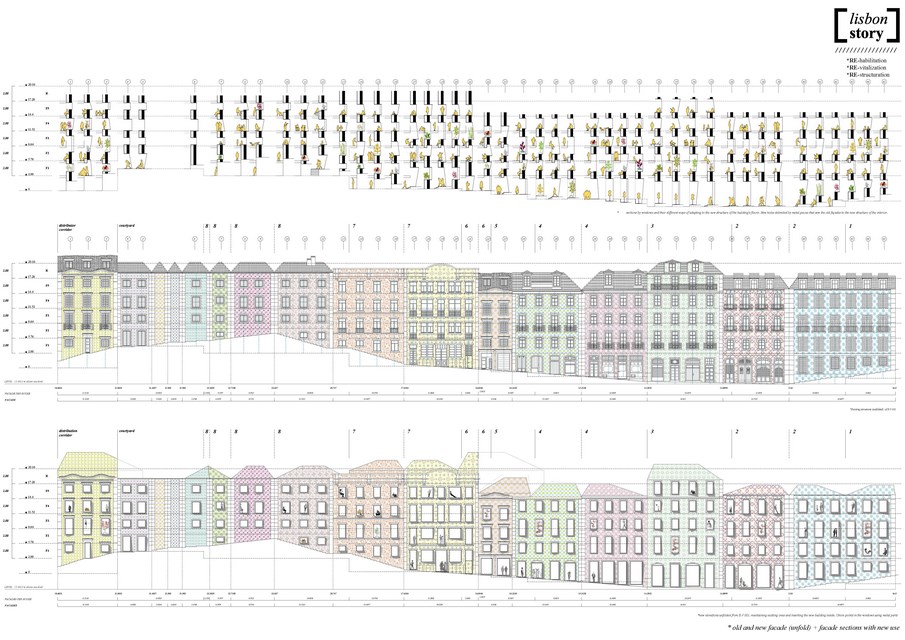LISBON STORY // RE-HABILITATION // RE-STRUCTURATION // RE-VITALIZATION // by Aranguren & Gallegos Architects | World Design Awards 2020
Aranguren & Gallegos Architects: Third Award of World Design Awards 2020. Sometimes when we think in S.XXI city we think in modern, new and hight tech buildings, but we forget the historical centers of the cities, full of history and tradition but in very poor condition and occasionally abandoned. Therefore, this project aims to address this problem through rehabilitation or reactivation of the oldest district of Lisbon: ALFAMA.
It is about rethinking how to improve or adapt these buildings and the neighborhood for people to use it and to make it productive.
This does not mean that you cannot innovate and propose new productive and energy-efficient solutions, as perhaps the most important solution for the cities is transforming these buildings, that are polluting more energy because of their old architectural solutions, into a polluted cero buildings.
Alfama is the oldest district of Lisbon. This is an old humble suburb of fishermen, the essence of Lisbon neighborhood; smells and feelings, timid life, birthplace of “fado” expressing the melancholy of the Portuguese people.
In this neighborhood are clear problems like: substandard housing, insalubrity, insufficient light in homes, streets full of steep stairs, lack of young people, closure of shops due to inactivity, elderly population…
On the other hand, it is a historic district with a unique and very distinctive beauty that gives personality to Lisbon by its facade tiles.
Because of their importance, which give character to the Alfama, is decided to intervene in the neighborhood by emptying interior of the buildings in poor condition, keeping these traditional facades.
The project intends to study the rehabilitation of a number of properties and for this, it does not study the houses independently, it understands rehabilitation as a group, with the intention of making the slightest distinction between public and private, creating a semi-public spaces and integrated in buildings.
The idea is to keep the spirit of the neighborhood. This prevents make buildings closed and hermetic. These are buildings in relation to the streets and permeable to them, that is, the building becomes part of the neighborhood and can enter the building through the ground floor of public facilities such as restaurants and shops which in turn to some galleries public and courtyards. These public facilities are scattered on different floors and even on the top floors with the intention of creating dynamic, living, space complexity and mix of uses.
From the port to the castle of San Jorge is a considerable height difference and it create a very difficult path in the neighborhood, especially for elderly residents. Therefore, the union of these blocks is proposed through bridges or walkways at different heights for connecting the whole neighborhood with lifts thus avoiding the stairs. To encourage these public tours inside the new buildings housing programs and social facilities alternate on different levels
It can be considered as a rehabilitation from the urban point of view, that respect and maintain the external appearance of the streets, with the idea of “Rehabilitating the city.” With this urban strategy is preserved a fundamental area for the city, making it accessible for older people who mostly live there.

Firm: Aranguren & Gallegos Architects
Architect: Maria Gonzalez Aranguren
Category: Urban Design Concept
Project Location: Lisbon, Portugal
Team: Maria Gonzalez Aranguren
Country: Spain
Photography ©Credit: Maria Gonzalez Aranguren







